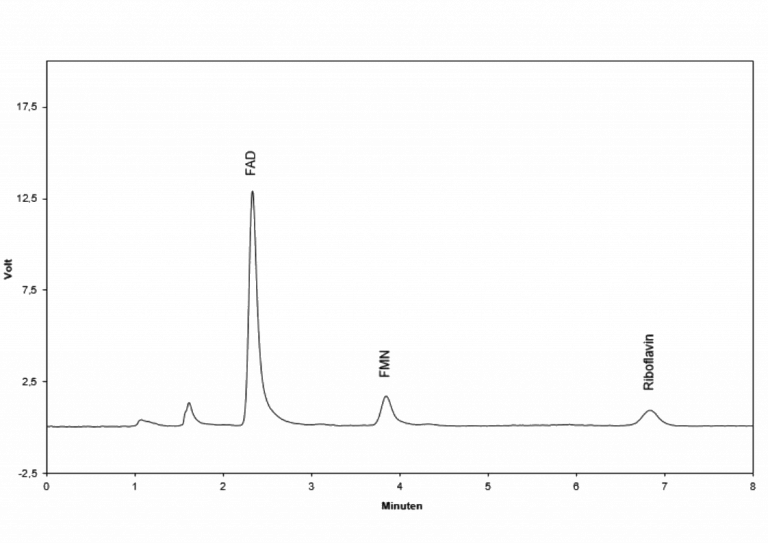Vitamin B2
Vitamin B2 is a collective term for the molecules Riboflavin, Flavinadeninedinukleotide (FAD) and Flavinadeninemononukleotide (FMN). Riboflavin belongs to the group of Flavonoids (plant pigments). It only can be synthesized by plants and microorganisms. Humans and animals ingest it via the gut and convert it to the coenyzmes FAD and FMN. They are distributed within the whole body with maximum concentrations in liver, kidney and heart.
FAD and FMN are important coenzymes in protein- and energy metabolism. In the central nervous system vitamin B2 is involved in the control of neuro hormones and biogenic amines.
A weak lack of vitamin B2 leads to unspecific symptoms as fatigue and listlessness. Beside this erythema, itching and gingival-inflammation are recognised. The metabolic pathways of carbohydrates, fatty acids, proteins and iron- and vitamin B6 metabolism are affected. A serious lack of the B2 vitamers leads to inflammation of the mucous membrane in mouth and nose, skin disease (dermatitis), ophthalmic disorder (reduction of the acuteness of vision, cataract), neurological disorders and
Technical data
Sample EDTA-blood
Sample volume 50 µl
Detector Fluorescence Ex. 450 nm Em. 530 nm
Method isocratic
Determinations 100
Ordering Information
IC2300 Testkit
IC2300ko Controls (2 level each 250 µl lyoph.)
IC2300rp HPLC column

Principle of the method
For the determination of vitamin B2 a precipitation step to remove high molecular substances is performed first. After centrifugation the supernatant is mixed with a stabilization solution and injected into the HPLC system.
The isocratic separation via HPLC at 30°C lasts 10 minutes. The chromatograms are recorded by a fluorescence detector. The quantification is performed with the delivered EDTA-blood calibrator; the concentration is calculated via integration of the peak heights respectively areas.